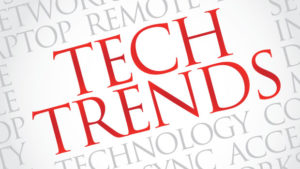
The M2M (machine-to-machine communications) industry is undergoing a period of fundamental change and significant growth.
Encouraged by declining chipset and sensor costs, manufacturers are increasingly embedding their products with wireless connectivity. Mobile operators and key players in industries as diverse as automotive, oil and gas, and healthcare all have a strong interest in pursuing this growing market.
M2M Health Market Drivers
In the healthcare industry, M2M connectivity offers a variety of benefits, from improved care and lower costs to more efficient services. Parks Associates believes that the aging-in-place market and home-based diagnostic and monitoring market represent the two biggest opportunities for carriers in the consumer M2M health space.
Two distinct trends are driving these opportunities:
1. People are living longer but not necessarily healthier. The aging population is a global phenomenon affecting the U.S., Western Europe and Japan, among others. Incidences of chronic conditions are high in most developed countries and on the rise in major developing nations, such as China, due to changing lifestyles (e.g., high-calorie diet, stress, sedentary jobs) and increasing environmental hazards (e.g., pollution, poor air quality). The consumer desire to age at home drives demand for intelligent sensor systems that enable at-home self-care.
2. Rising healthcare costs are pushing care delivery to cheaper, convenient, patient-centric alternatives. Use of telehealth solutions and services will consequently increase, and help drive demand for connected medical devices for diagnosis and monitoring.
One consumer segment in particular shows solid interest in paying for home health monitoring technologies — caregivers.
Parks Associates estimates that 18 million households in the U.S. have at least one caregiver looking after at least one patient or an aging parent. More than one-third of these 18 million households are willing to pay for a fall-detection solution, and more than one in four would pay for a telehealth service or a location-tracking service.
While not all solutions will include M2M connectivity, some market segments — like the personal emergency response systems (PERS) market — are leading the way.
Over the past 18 months, embedded connectivity for PERS solutions in the U.S. has rapidly increased. Most PERS product vendors and service providers currently offer, or will develop in the near future, cellular-connected PERS products. These providers are leveraging cellular capability in PERS base stations to widen the market to households that have ditched landlines.
Additionally, integrating cellular modules inside the PERS panic button extends its range from in-home only to anywhere/anytime coverage. Although still a relatively small market (fewer than 400,000 cellular-enabled units will ship in 2016), it will enjoy high growth in the near term.
Parks Associates estimates more than 61 percent of the new PERS products shipped in 2017 in the U.S. will feature cellular M2M connectivity, compared to only 15 percent in 2012.
Deployment Strategies
To drive growth in M2M health services, leading carriers in North America, Europe, and Asia-Pacific have dedicated sales teams to this sector.
They are targeting hospital CIOs, durable medical equipment (DME) departments of large health organizations, medical device manufacturers, and leaders of health service organizations ranging from hospital ICUs to assisted-living facilities.
Within the healthcare sector, Parks Associates divides M2M applications into two major categories:
- patient-centric M2M applications that enable devices and services that directly benefit a patient’s health and safety needs; and
- business-centric M2M applications that improve business functions for healthcare providers.
Most carriers are pursuing opportunities in both categories, but overall they have allocated more sales resources to the patient-centric M2M market.
These solutions have higher volume potential, with better margins from high-value applications than business-centric solutions, but they also pose a higher liability risk and are subject to more regulatory red tape.
Within the patient-centric market, wireless healthcare solutions can be segmented into wellness and fitness applications, which are typically marketed directly to the consumer, and medical applications, which are more likely to be reimbursed by insurers and government healthcare programs.
Many notable operators have supported such applications in this sector:
-
- AT&T and Vodafone support mobile health monitoring devices that track patients’ heart health and other related vital signs for Boston Scientific.
- T-Mobile, through customer BeClose, supports connected body and home sensors that track a senior’s in-home activity, detect accidental falls, and improve the overall aging-in-place experience.
- Orange and Sprint support vital-sign monitoring devices for IDEAL LIFE that can track and help manage chronic conditions such as diabetes and congested heart failure.
- Sprint, through BodyMedia, supports connected fitness devices that collect and track fitness progress toward consumers’ established goals.
- AT&T, through its customer Vitality, offers a connected pill box that tracks medication usage, offers reminders and requests prescription refills.
- Telenor supports a wireless glucose meter, offered through Telcare, that integrates with clinical servers, electronic health records, and multiple smartphone apps for diabetes management.
For mobile carriers, capitalizing on the M2M opportunity in the consumer health market requires patience and focus. They need to develop relations with established device makers as well as with emerging players that are disrupting the traditional medical device market.
New players such as CardioNet (arrhythmia monitoring), Dexcom (continuous glucose meter and monitoring), Vitality (connected pill box), Ideal Life (networked vital sign monitoring), and LogicMark (mobile PERS) are challenging established market leaders — brands like Philips, Medtronic, Omron and Linear — in their respective fields.
Whether established or emerging, these health business clients value cellular coverage and quality of service. They need a network operator that can cover patients living in rural areas, provide strong connections for timely reporting, and ensure network reliability in life-or-death situations.
These considerations and requirements will be the keys for mobile carriers in winning customers in this growing space.











































Social Media
See all Social Media